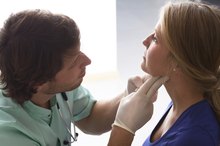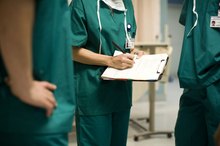What does fact checked mean?
At Healthfully, we strive to deliver objective content that is accurate and up-to-date. Our team periodically reviews articles in order to ensure content quality. The sources cited below consist of evidence from peer-reviewed journals, prominent medical organizations, academic associations, and government data.
- "Der Anaesthesist"; The History of Tracheotomy; L Brandt and M Goerig; May 1986
- "Der Anaesthesist"; The History of Tracheotomy; L Brandt and M Goerig; May 1986
The information contained on this site is for informational purposes only, and should not be used as a substitute for the advice of a professional health care provider. Please check with the appropriate physician regarding health questions and concerns. Although we strive to deliver accurate and up-to-date information, no guarantee to that effect is made.
Can You Eat With a Tracheotomy?
A tracheotomy is one of the oldest operations, possibly dating back to the last century prior to the Christian era, according to a May 1986 article in "Der Anaesthesist." This surgical procedure involves making a hole in your trachea, or windpipe 1. The hole itself is called a tracheostomy 2. Your physician may recommend this procedure for a variety of medical reasons. If you are planning to have this surgery, understanding post surgical care is essential.
Purpose
You may need to keep your tracheostomy open for the rest of your life or it may be a temporary measure, depending on the underlying reason for the procedure. A tracheotomy can be an emergency procedure if you are unable to breath. It may also be necessary if you have medical conditions that are obstructing your breathing such as throat cancer, neck trauma and certain neurological conditions. A doctor may perform a tracheotomy prior to other major surgeries to assist breathing.
- You may need to keep your tracheostomy open for the rest of your life or it may be a temporary measure, depending on the underlying reason for the procedure.
Getting Nutrients
How to Remove Food Stuck Behind Your Palette
Learn More
You won't be able to eat food right after having this procedure. You will likely experience a considerable amount of discomfort in the first few days after the tracheotomy due to swelling and incision pain. Eating food isn't possible in the beginning stages of healing. Your physician will recommend an appropriate method of overcoming this obstacle so that your body gets the important nutrients it needs. A feeding tube inserted through the nose, mouth or stomach is a possibility during your hospitalization. You may also receive nutrients through an IV line.
- You won't be able to eat food right after having this procedure.
- A feeding tube inserted through the nose, mouth or stomach is a possibility during your hospitalization.
Eating Food
Adjusting to breathing and functioning with a trach tube is important so that you can resume normal activities -- including eating. You may need to work with a speech therapist or other health care professional to strengthen your swallowing ability. You should be able to resume eating food as normal once you make these adjustments. Following your physician's instructions for suctioning the trach tube daily is vital to prevent mucous buildup and infection. Suctioning before eating is recommended; doing so during or after eating increases the risk for coughing and vomiting.
- Adjusting to breathing and functioning with a trach tube is important so that you can resume normal activities -- including eating.
Swallowing Problems
Swimming With a Tracheostomy
Learn More
Consulting your health care team is important if you are having trouble with eating food. They can determine whether there's a problem with your tube that they need to address. If no underlying medical cause is behind your difficulty, your speech therapist can further analyze your swallowing ability. Signs that signal a problem include the presence of food in trach secretions, watery secretions and drooling. Choking or coughing while eating are also signs of a swallowing problem.
- Consulting your health care team is important if you are having trouble with eating food.
Related Articles
References
- "Der Anaesthesist"; The History of Tracheotomy; L Brandt and M Goerig; May 1986
- John Hopkins Medicine Tracheostomy Service: Eating with a Tracheostomy
- Porr J, Laframboise M, Kazemi M. Traumatic hyoid bone fracture - a case report and review of the literature. J Can Chiropr Assoc. 2012;56(4):269-74.
- Ganuza JR, Oliviero A. Tracheostomy in spinal cord injured patients. Transl Med UniSa. 2011;1:151-72.
- National Heart, Blood, and Lung Institute. Tracheostomy.
- O'Connor HH, White AC. Tracheostomy decannulation. Respiratory Care. 2010:55(8):1076-1081.
- Fernandez-bussy S, Mahajan B, Folch E, Caviedes I, Guerrero J, Majid A. Tracheostomy tube placement: early and late complications. J Bronchology Interv Pulmonol. 2015;22(4):357-64. doi:10.1097/LBR.0000000000000177
- Johns Hopkins Medicine. Complications and Risks of Tracheostomy.
- Engels PT, Bagshaw SM, Meier M, Brindley PG. Tracheostomy: from insertion to decannulation. Can J Surg. 2009;52(5):427-33.
- American Nurse Today. Tracheostomy care: An evidence-based guide. Published July 11, 2011.
- Johns Hopkins Medicine. Decannulation.
- Medscape. Tracheostomy. Updated December 2018.
Writer Bio
Previously working for the North Carolina Community College System, Rachel Morgan has been a freelance writer and editor for over six years. She has a bachelor's degree in public health as well as a master's degree in English.









